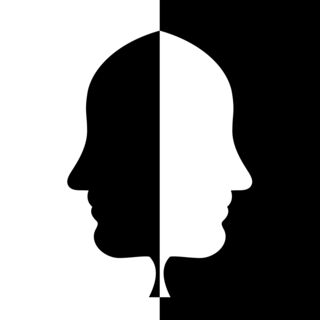Emotion Regulation
Hitting a Wall With Hard Situations and Hard People?
How a “forced opposites” approach can change the outcomes.
Posted October 5, 2022 Reviewed by Ekua Hagan
Key points
- Productive orientation relies on action, reality, and awareness, as well as feeling oriented towards empathic understanding of others.
- Emotional regulation, especially "explicit emotional regulation," engages "conscious monitoring" in an effort to change how we interpret events.
- Cognitive and emotional regulation strategies deploy the potentials to alter reactivity and automatization to circumstances.
- A "forced opposites" approach, where one engages the opposite reaction in the best interest of others, can alter tough situations.

Many years ago, in my early days in as an administrator, I remember one particular day, witnessing a number of employees emerging from the head director’s office during an annual review session. Everyone who went in came out angry and physically upset. I could guess what the context of each interaction might have looked like, where defensive energies were being slung around by both the manager and staffers. My approach, I decided, after witnessing this interaction, would be experimental when it came time for my review.
I eventually got the call to come down to his office. I took a moment to remind myself of my purpose and the context of the situation I was going into and grabbed my notebook and pen and walked over. As I entered, I heard him say “close the door” very matter-of-factly. I could see the tension on his face as I sat down. He was already in “defensive” mode. I greeted him with cordiality although met back with none, opened my notebook, and waited.
As he began listing areas, that to him, were not up to par, I listened attentively. I told him that I could understand, given his position, that the times in which he observed me may not have met his expectations and that my goal was to definitely ensure, that from his perspective, I worked towards those expectations.
His expression was one of surprise. No matter what he threw at me, I met it with what may have been the opposite of what he expected. I consciously attended to his points without taking offense or assigning them negatively to my own sense of self in any global way. At times, he peaked with a disgruntled attitude, while I agreed that it was my role to amend what he had observed and a plan to address those things.
By the end of our time, he said he appreciated the review, and that it was so different to not be met with anger and defensiveness. I walked out with not only a merit increase but demonstrated to someone else and myself that not every situation need end badly.
This is what the noted social psychologist Erich Seligmann Fromm referred to as a “productive orientation” (Fromm, 2001, p. 32). In the realm of “action,” it is expressed as a product of work or doing something about what is needed. In the realm of “thought,” it is expressed as an orientation to "reality" and what is happening around us. In the realm of “feeling,” it is expressed as an act of kindness, love, or generosity (Fromm, 2001, p. 32).
Having a product orientation to what is happening, how we can change it, and learning to empathize, can help many situations like the one I engaged above. In fact, this has helped me and a number of my patients in an array of situations, some of which might even be considered “lethal.” But how do we come to enact such a disposition in those “hard times” we might encounter?
Taking a forced opposites approach
“Emotional regulation” is a key concept I reiterate with patients to have it eventually ingrained in their vernacular. Emotional regulation, according to the American Psychological Association Dictionary of Psychology (2014), refers to one’s ability to modulate (modify) an emotional state or set of emotions.
There are also two forms of emotional regulation. One is known as explicit emotional regulation which requires a higher form of “conscious monitoring,” or “awareness” using a variety of methods like learning to read situations differently, perhaps shifting the target of an emotion such as anger in a way that might alternatively produce a more constructive outcome, as well as identifying how dissimilar behaviors could be engaged in the service of an arising emotional state (APA Dictionary of Psychology, 2014).

The other, implicit emotional regulation, does not require the kind of conscious monitoring that the former needs, and is typically thought of as an automated response to a presented stimulus. It is the first of these terms we are concerned with here that ultimately shapes the other in a tense or hard circumstance.
When I speak to patients about how they are affected by situations, perhaps an angry friend or family member, a tense situation with a stranger, a road rage incident, or whatever it may be, I then help them understand more about emotional regulation and “emotional regulation strategies.” According to researchers, Wytykowska et al., (2022), “cognitive and behavioral emotion regulation strategies refer to the specific ways in which individuals actively regulate their emotions and tough goal-orientation by shaping the intensity, duration, valence, and quality of their emotions.”
Taking control of the situation
In this, a bigger part of my strategy is to help patients understand and take control of their feelings in any situation. This is known as “emotional conflict adaptation” (Gyurak et al., 2019). A big part of this concept utilizes a technique I refer to as a “forced opposites approach,” also known in Dialectical Behavior Therapy circles as “opposites action.”

We know for instance that each emotion we entertain comes with a “related action urge” or automated reaction (Musch, 2022). A good example might be if you are heated and angry at someone and there is an overwhelming feeling or desire to lash out. In this pivotal moment, it might be toughest to try and find an alternate dissociable neural pathway to change your reactive response. So in order to reduce and down-regulate emotions, a forced opposites approach might mean we engage the “opposite” reaction in the best interest of ourselves and others (Gyurak et al., 2019). Perhaps this is done by walking away, taking a moment to relax our tense body, and trying to maybe understand what the other person may have been feeling as well. It is a strategy that can be added to anyone’s emotionally generative toolbox.
The forced opposites approach works best before situations get too intense, but that doesn’t mean you can’t use it at any time. I have helped many repair relationships, down-regulate emotional states, and develop a greater capacity for loving others by using a forced opposites approach. I have also seen it work with people who were struggling with addictions and suicidal ideations. When we take a positive action that most do not expect, and is good for us and others, the world and our experience of it can change radically.
References
APA Dictionary of Psychology. “APA Dictionary of Psychology.” Apa.org, 2014, dictionary.apa.org/emotion-regulation.
Fromm, E. (2001). The sane society. Psychology Press.
Gyurak, Anett, et al. “Explicit and Implicit Emotion Regulation: A Dual-Process Framework.” Cognition & Emotion, vol. 25, no. 3, Apr. 2011, pp. 400–412, 10.1080/02699931.2010.544160. Accessed 3 Aug. 2019.
Musch, Susie. “The Magic of Opposite Action | Counseling Services.” Counseling.uoregon.edu, 2022, counseling.uoregon.edu/magic-opposite-action.
Wytykowska, Agata, et al. “Taking a Person-Centered Approach to Cognitive Emotion Regulation: A Latent-Profile Analysis of Temperament and Anxiety, and Depression Types.” Personality and Individual Differences, vol. 189, no. 189, Apr. 2022, p. 111489, 10.1016/j.paid.2021.111489.




